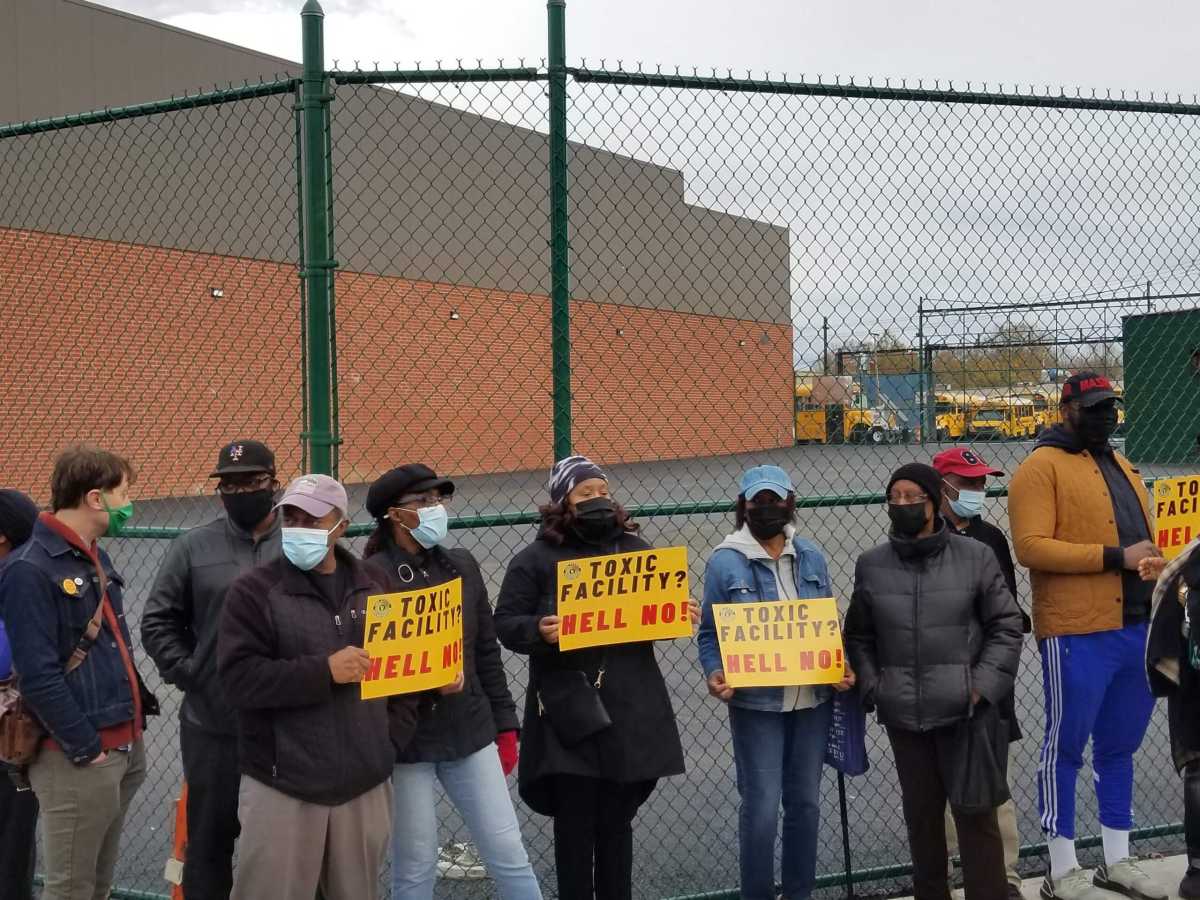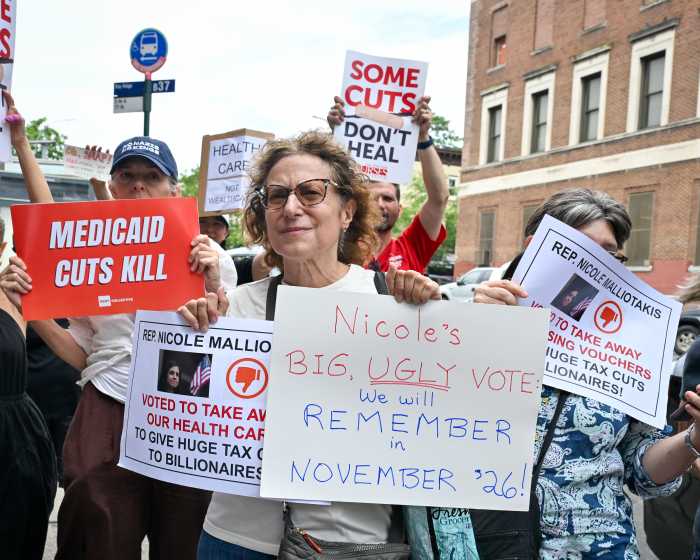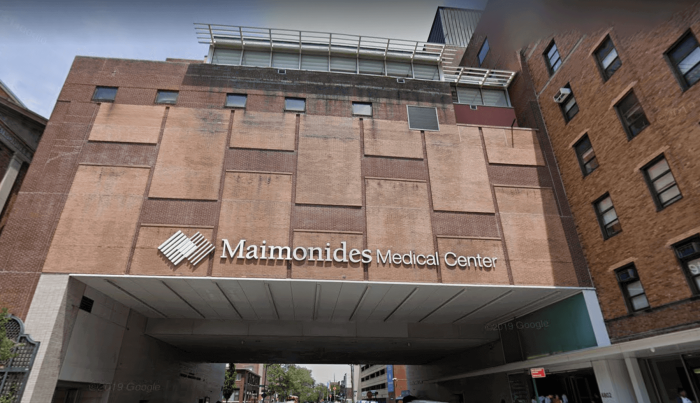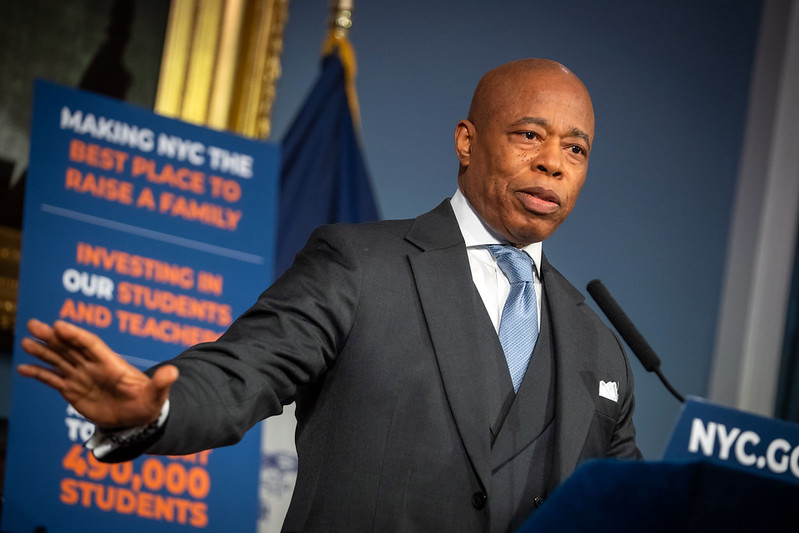The city has revived a proposal to site a pesticide storage facility at 1427 Ralph Ave. in East Flatbush, after pulling back a land-use application earlier this year following opposition by residents and local electeds.
No new land use application has been filed, and no final decisions have been made. But a spokesperson for the Health Department confirmed that the city is re-engaging the community to seek buy-in for the nearly 50,000-square-foot facility straddling East Flatbush and Canarsie, which would serve as a citywide storage and distribution center to store chemicals used for killing or repelling critters like mosquitoes, ticks, and rats.
“We are reviewing the community’s concerns,” said Health Department spokesperson Michael Lanza. “No decisions have been made and we are in communication with community leaders.”
Councilmember Farah Louis, who represents the area at City Hall, sent a letter last week to city Health Commissioner Dave Chokshi reiterating that she, other local pols, and community members remained in opposition to the chemical warehouse.
“After speaking with our constituents, they have expressed no interest in considering or discussing the aforementioned proposal with [the Department of Health and Mental Hygiene] or any City agency,” Louis wrote in the Nov. 5 letter, which was also signed by Public Advocate Jumaane Williams, state Sen. Roxanne Persaud, and Assemblymembers Nick Perry and Helene Weinstein. “Our decision has not changed, we remain firm in our position that we do not want such a facility in our backyard.”
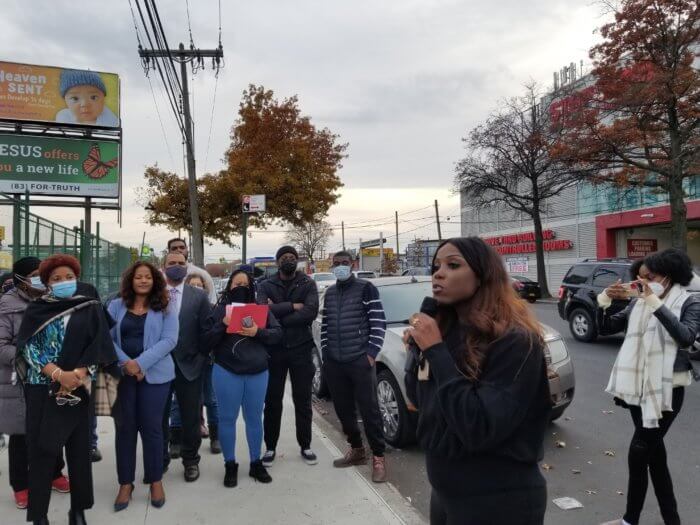
A few dozen community members, elected officials and civic leaders protested Thursday at the site of the proposed facility, which is connected to a grocery wholesaler Food Saver New York, is a block away from the massive Brooklyn Terminal Market food wholesaler and distribution center, and sits across the street from a school bus depot.
Electeds and community activists dispute the notion advanced by the Health Department that it is performing community outreach regarding the facility, instead portraying the city’s moves as underhanded.
“How is it possible that we are still having this conversation on something that was killed two weeks after we told them no,” said Gerard Brewster, president of the Utica-to-Flatbush Initiatives. “If they thought it was cool and it was something that made sense, why are they hiding? The only reason I know that it’s back is because my councilmember told me.”
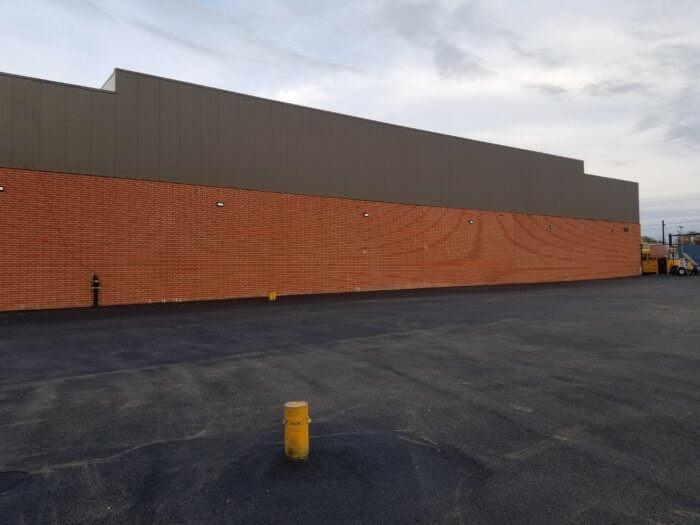
“Now six months later,” Brewster continued, “for them to say they’ve been trying to reach us, it just gives you an idea of the skullduggery, the foolishness, and really the underhandedness of the folks involved in this.”
The Health Department pulled back the proposal in May after facing protests by residents, opposition by local electeds, and a thumbs-down advisory vote by Borough President Eric Adams. Curiously, the local Community Board, CB18, almost unanimously approved the proposed facility at its March board meeting, but officially switched its position in May when several members said they had been confused by the mechanics of the vote and mistakenly thought they were voting it down, though the board chair Michael Ien denied to Brooklyn Paper that the facility was approved accidentally at the time.
While the Health Department says there have been no pesticide leaks or spills at city facilities in 20 years, concerned citizens say the potential harm from a leak or spill outweighs the low likelihood of one occurring, noting that the chemicals are, by definition, poisonous. They also raised concerns about the facility’s impact on air and water quality, especially given the long history of governments siting hazardous facilities like chemical warehouses, toxic waste dumping sites, landfills, or sewage treatment plants in neighborhoods of color, especially Black communities like East Flatbush and Canarsie, and the resulting negative health effects they’ve had on those communities.
“The community has spoken: they don’t want a facility that’s gonna be toxic to their children, in air, water, and whatever way,” said incoming Councilmember Mercedes Narcisse, whose Canarsie-based district lies just a block away from the site, at the rally. “Any time there is a facility or any services that they want to put that’s not gonna be beneficial to any community, they find their way in our community. So we cannot stay silent.”
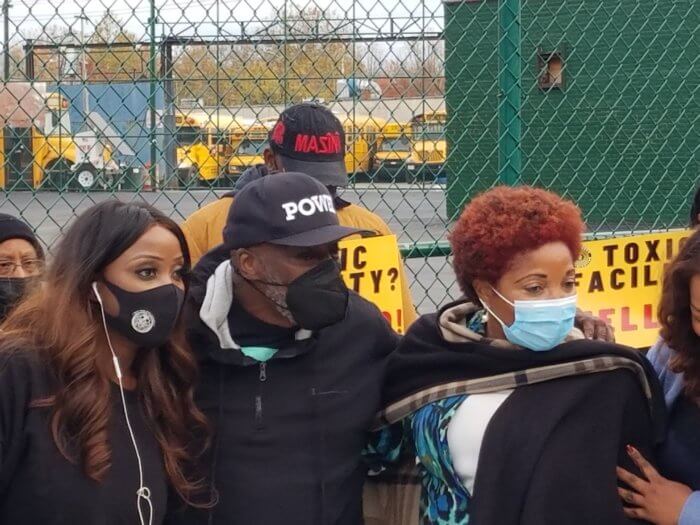
Louis, who noted that she only found out the city was again looking to site the facility on Ralph Avenue after getting a phone call from the Health Department in recent weeks, said that the city “over and over” places harmful sites in neighborhoods of color, expecting less pushback than in whiter and wealthier communities.
“We know we don’t want this site here, we don’t want the pest control site here,” Louis told Brooklyn Paper. “They continue over and over and over again to implement things in Black and brown communities that affect us. They affect our health, they affect our quality of life. Nobody cares about that.”
There are various classes of pesticides containing different chemicals, but the common thread connecting them is the hazard they can pose to human and animal health, to varying degrees; they can cause everything from birth defects, asthma, and skin conditions, all the way up to dementia and cancer.
An email exchange between the Borough President’s office and the Health Department from April shows the list of pesticides the city wants to store at the facility: they include DeltAGard Insecticide, VectoPrime larvicide, and various different rodenticides, largely composed of Contrac-branded products, all of which are approved for use in the city by the state and the EPA and are deemed safe for use but should still be handled carefully and out of reach of children and pets.
Narcisse suggested that a better use of the site could be as a community health center or mental health clinic, both of which are lacking in her district.
“We would like to see a community health center, that would be very beneficial,” Narcisse told Brooklyn Paper. “And we’re dealing with mental health, mental health is a problem, we can have that too in our community to address mental health care, that’d be beneficial to our community.”
The city banned the use of pesticides in parks earlier this year, but the Health Department is able to obtain waivers if there is an overriding public health interest such as eradicating mosquitoes bearing West Nile Virus. The city earlier this year sprayed residential areas and parks in Central and South Brooklyn with pesticides to combat the virus-bearing mosquitoes, and claimed that the chemicals they now use pose minimal risk to human health.


